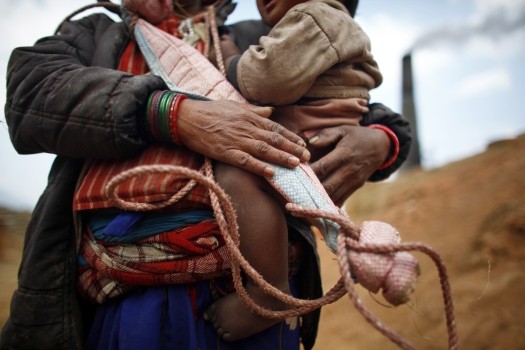ICTJ recently released two publications examining the many ways in which women are impacted by enforced disappearance, completing a multi-year project to examine the lasting impact this practice has on women across the world, and how transitional justice measures can help to redress these effects.
Read the global report here and the Lebanon report here
Below, our experts on Gender Justice have identified eight of the many ways in which women’s lives are affected by this practice, both as the disappeared and as female relatives of the missing.
1. Women make up the minority of those who are disappeared around the world, but in almost every country they make up the majority of those who suffer serious, lasting harms after the disappearance of a male relative, who is often the family breadwinner.
By acknowledging that women are victims of disappearances with specific experiences and needs, states, societies and communities can better respond to their needs.
2. Women are generally at the forefront of the search for truth about the disappeared, which puts them at greater risks of abuse, extortion and manipulation.
By adopting a gender-sensitive approach, truth commissions can encourage women to share their experiences, not just of losing their loved one, but also of the human rights violations they have suffered as a result.
3. In some countries, the only way a woman can access bank accounts and property that are held in the name of the disappeared is to declare their loved one dead, though they are often reluctant to do so.
Creating a legal category like “absence by reason of disappearance” that allows families access to assets in the name of the disappeared will allow women greater financial security without needing to declare the death of their loved one.
4. In some cultures, wives of the disappeared lose social status because they are formally considered neither a “wife” nor a “widow.” Instead, they are ostracized, and left to live in a state of limbo.
In addition to creating the legal category “absence by reason of disappearance,” memorialization and remembrance initiatives that valorize women’s efforts to search for truth can contribute to more positive social perceptions and understanding.
5. Wives of the disappeared may suffer inter-familial harassment and social isolation if they are perceived as an economic burden on their family.
Recognizing female relatives as victims of disappearances rather than just heirs of the disappeared facilitates their eligibility to receive reparations.
6. Mothers may lose custody of their children when their husband is disappeared due to discriminatory laws or social practices.
Ensuring they have access to the legal system and that their custodial rights are formally recognized by courts is a critical first step to make sure children can remain in the care of their mothers.
7. When the male breadwinner of the family is disappeared, wives are often forced to enter the workforce, sometimes for the first time.Without skills or experience, many women must take low-paid insecure jobs or risk exploitation, including through sex work.
Reparations programs that include skills and employment training can provide women with more secure and financially stable work opportunities.
8. Women who live with the repercussions of a disappeared loved-one are more likely to experience serious physical and mental health problems due to unequal access to healthcare.
Implementing both urgent and comprehensive psycho-social reparations that are designed to prioritize women will enhance women’s access to essential health services.
See more on the disappeared in our photo gallery Capturing the Void.
